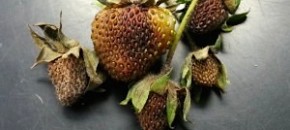Potato Disease Forecasting Report 5-5-14 – Click to Download We will be tracking DSVs for Late blight development and calculating P-days for initiating the first early blight fungicide application. The first late blight fungicide application is recommended once 18 DSVs accumulate from green row. Green row typically occurs around the first week in May in southern […]
Continue reading...Tomato Disease Forecasting Report 5-5-14
5-5-14 Tomato Report – Click to Download Disease severity values (DSVs) for early blight, septoria leaf spot, and tomato anthracnose development are determined daily based on leaf wetness (due to rainfall, dew) and air temperature. On a daily basis DSV values can range from 0 to 4 where 0 = no chance for disease development […]
Continue reading...Free, Updated Agronomic Crops Weed Control Guides
Available from the UD-REC website are weed management guides for assistance in weed control in corn, soybeans, or forages. http://extension.udel.edu/ag/weed-science/weed-management-guides/ There is a separate guide for each commodity. The first half of the corn and soybean guides deal with soil-applied herbicides and the second half is for postemergence herbicides. These guides have pre-mixes and what […]
Continue reading...Herbicide Classification Chart Available
Working with the Delaware Soybean Board and the United Soybean Board, a herbicide classification chart is available at:http://extension.udel.edu/ag/weed-science/weed-management-guides/ This chart groups herbicides by mode of action and site group numbers that are printed on containers and labels. The chart is designed to help diversify herbicide use by rotating effective herbicides with different sites of action […]
Continue reading...No-Till Soybean Burndown Considerations
Due to the weather, a number of no-till soybean fields have not received a burndown treatment yet. As a result, many are asking about options for control. First a number of considerations: 2,4-D ester: Rate of 2,4-D may need to be adjusted. Most 2,4-D brands require a 4 week delay between application of 1 qt […]
Continue reading...Strawberry Fruit Rots

Fruit rots in strawberry can cause significant losses if not recognized early and controlled. The use of good cultural practices such as: keeping fields weed-free and promoting good drainage; long crop rotations, and preventative fungicide applications are critical. Pathogens such as anthracnose, gray mold (Botrytis), and leather rot can become systemic problems in strawberry plantings […]
Continue reading...